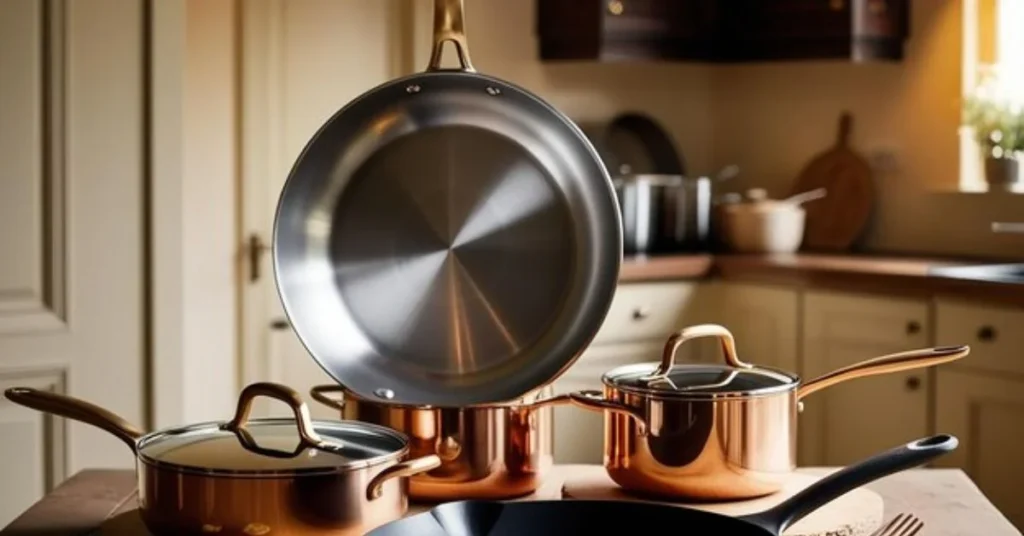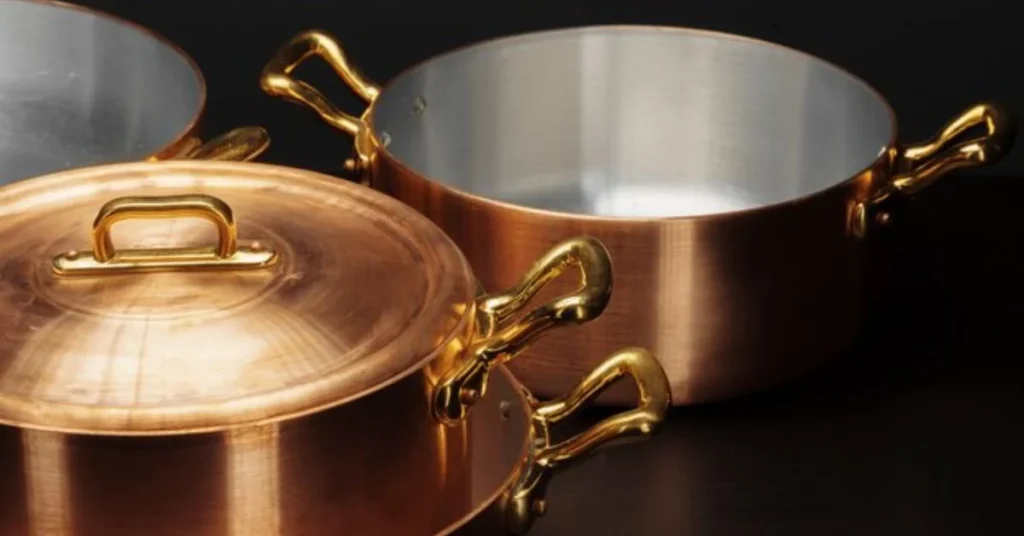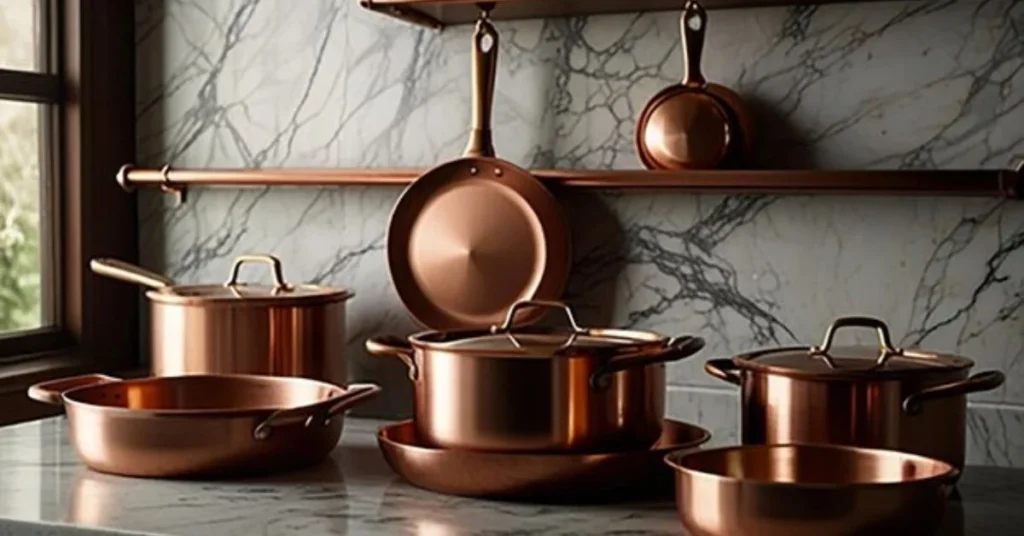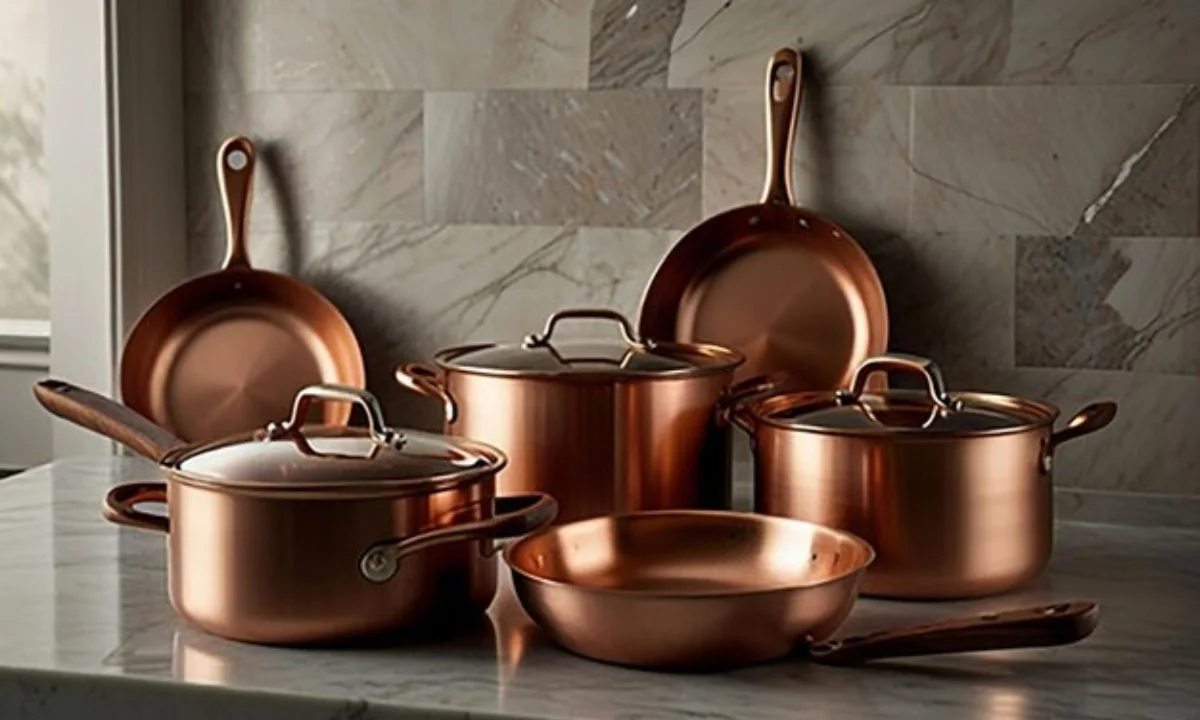When it comes to cooking, the materials we use for our pots, pans, and utensils can impact both the food’s taste and our health. A common question many people ask is: why can’t we use bronze utensils for cooking? While bronze has been used for centuries in various tools and artifacts, it isn’t the best choice for your kitchen. In this article, we will explore why bronze utensils are unsuitable for cooking, the science behind it, and the potential risks involved.
What is Bronze?
The Composition of Bronze
Bronze is an alloy made by combining copper and tin, with copper being the primary component. It has been used since ancient times for making tools, weapons, and decorative items. While strong and durable, bronze’s chemical properties make it unsuitable for cooking.
Must read Hagie Tunkara Chef: Discovering the Culinary Genius Behind the Flavors
How Bronze Reacts with Food
One of the main reasons we don’t use bronze utensils for cooking is the chemical reaction that occurs between bronze and certain food items. The copper content in bronze can react with acidic foods, like tomatoes, vinegar, and citrus fruits, creating toxic compounds that can contaminate the food and pose health risks.
The Dangers of Using Bronze Utensils for Cooking
Health Risks Associated with Bronze Utensils
Using bronze cookware and utensils in your kitchen could lead to copper toxicity, also known as copper poisoning. This occurs when the body absorbs too much copper from food prepared in bronze utensils. Symptoms of copper poisoning include nausea, vomiting, diarrhea, and even liver damage in severe cases.
The Effect on Food Quality
Bronze utensils can alter the taste and appearance of your food. When the metal reacts with acidic ingredients, it may give the food a metallic taste. The chemical reaction can also cause discoloration, making your meal look less appealing.

Historical Use of Bronze
Why Bronze Was Popular in the Past
Historically, bronze was a widely-used material for creating tools and household items because of its strength and durability. During the Bronze Age, it revolutionized tool-making. While bronze was used for various purposes, cooking wasn’t one of them, even back then. Iron, clay, and stone were more suitable materials for cooking.
Transition to Safer Materials
As technology and knowledge evolved, societies shifted away from using bronze for cooking. Materials like stainless steel, cast iron, and aluminum became more popular due to their safety, durability, and resistance to corrosion and chemical reactions.
Alternatives to Bronze Utensils
Stainless Steel
Stainless steel is one of the most popular choices for cooking utensils today. It doesn’t react with acidic foods, is highly durable, and is easy to clean. It’s a great alternative to bronze for cooking and provides a non-toxic, safe surface for food preparation.
Cast Iron
Cast iron has been used for centuries and remains a favorite among chefs. It distributes heat evenly and adds a unique flavor to food when seasoned properly. Unlike bronze, cast iron doesn’t react with food or pose a health risk.
Aluminum
Aluminum is lightweight, conducts heat efficiently, and is used in many cooking utensils. However, it’s important to use anodized aluminum for cooking to prevent any possible reactions with food.

Why Can’t We Use Bronze Utensils For Cooking
Decoration and Art
While unsuitable for cooking, bronze remains a beautiful and durable material for decorative items, sculptures, and art pieces. Its rich color and historical significance make it ideal for adornments in homes and public spaces.
Bronze in Musical Instruments
Bronze is also used in making various musical instruments, especially bells and cymbals. The metal’s resonance and durability make it perfect for creating long-lasting and high-quality instruments.
Modern-Day Myths About Bronze Utensils
Misconceptions About Traditional Cooking
Some people believe that using traditional materials like bronze for cooking might be beneficial, as they link it to ancient practices. However, this is a misconception. The scientific reasons behind not using bronze in cooking—such as its reactivity with food and potential health risks—make it a poor choice for modern kitchens.
Confusion with Other Metals
It’s essential not to confuse bronze with brass or copper cookware, both of which also have limitations. Brass contains zinc, which can also react with food, while unlined copper should never be used for cooking without a protective layer, as it can leach copper into food.
Conclusion: Why Can’t We Use Bronze Utensils for Cooking?
In conclusion, while bronze may have historical and artistic value, it is not a safe or practical material for cooking utensils. The chemical reactions between bronze and food, particularly acidic ingredients, can lead to toxic compounds and potentially harmful health effects. Therefore, it is best to stick with safer alternatives like stainless steel, cast iron, or anodized aluminum when preparing meals. Understanding the science behind cooking materials helps ensure a safe and healthy kitchen environment. Click here for more information.

FAQs About why Can’t We Use Bronze Utensils for Cooking
Why can’t we use bronze utensils for cooking?
We can’t use bronze utensils for cooking because the copper in the alloy reacts with acidic foods, potentially creating toxic compounds and affecting the taste of the food.
What are the health risks of cooking with bronze utensils?
Cooking with bronze utensils can lead to copper poisoning, which may cause symptoms like nausea, vomiting, diarrhea, and, in severe cases, liver damage.
What are safer alternatives to bronze for cooking?
Safer alternatives include stainless steel, cast iron, and anodized aluminum, as these materials do not react with food and are safe for cooking.
Did ancient people use bronze for cooking?
While bronze was widely used during the Bronze Age for tools and weapons, it was not commonly used for cooking due to its reactive nature with food.
Can bronze utensils be used for anything other than cooking?
Yes, bronze is great for making decorative items, art pieces, and musical instruments, as it is durable and has a rich, appealing color.
